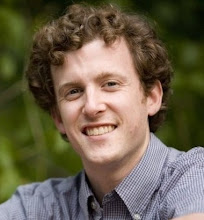The trip began with two nights in Entebbe (at a convent near the airport) and three nights in Kampala. During that time we visited a few places: the Uganda Martyrs Shrine at Namugongo, the MCC headquarters, an awesome dance performance by Ndere Troupe, the source of the Nile at Jinja, and a vocational school for girls in Mukono.
Then, on Day 7 we got up before dawn and began the drive to Lira, which is north of Kampala on the way to Gulu. This journey marked the beginning of three full days in northern Uganda, which were the hardest parts of our trip. The region has been the main battleground for the Lord's Resistance Army for most of the last 23 years. You can read more about the LRA and Joseph Kony on the web, but the very brief version is that Kony started a rebel insurgency in 1986, ostensibly to fight against the anti-northern government of President Yoweri Museveni. The LRA has survived by raiding fields and villages for supplies, and by kidnapping children to replenish its ranks of soldiers, porters, and sex slaves. They are notorious for brutalizing the civilian population. By the early part of this decade, virtually all of the 2 million residents of northern Uganda had been forced into Internally Displaced Person (IDP) camps. The LRA has not been active in Uganda for the last three years or so, having been pushed into the Democratic Republic of Congo and Central African Republic. Here is a story on their most recent activity in DRC.
So. In Lira, we visited the site of perhaps the most infamous episode of the war: the abduction of 139 schoolgirls from St. Mary's Aboke girls' school in 1996. The deputy headmistress, an Italian nun, actually tracked the rebels through the bush, caught up to them the next day, and was able to secure the return of 109 of the girls. Of the remaining 30, five have died in captivity, but many have managed to escape. Remarkably, the last remaining Aboke girl escaped and returned to Uganda just this past May.
After Lira, we proceeded to Gulu. This city has been at the center of the war since it began, and is now flooded with NGOs and aid money, making for a very peculiar environment. Here, we were able to meet for two hours with the Roman Catholic Archbishop John Odama. We slept at St. Monica's, a boarding school for formerly abducted girls who have returned from the bush. The school is run by Sister Rosemary, who received a CNN Heroes award in 2007 for her work. (See her tribute video here.)
Our other major activity in Gulu was to visit Sr. Margaret Aceng and the Caritas Counseling Centre. They offer psychological services for trauma survivors. I'll talk more about this place in a separate post.

After Gulu, we headed west toward Murchison Falls. This helped us relax and decompress a little bit, although the transition felt abrupt to me: one day, talking with people who were tortured by pillaging rebels, and the next day, gawking at giraffes and elephants? In any case, we enjoyed the game park, and the falls were amazing.
After leaving the Murchison Falls area, we made our way back towards Entebbe, stopping on Sunday morning for mass at St. Joseph's parish, Katikamu. The parish priest here is the brother of Fr. Emmanuel (our trip leader), and our friends/classmates Tommy and George had been serving as field ed interns there all summer. We had the pleasure of sharing in the farewell celebration for Tommy & George, and got to see how much affection the kids have for them. Very fun.
Our final days included visits to L'Arche Kampala and an AIDS clinic at Mango Hospital, as well as some shopping. We got to have cordials and lunch with Cardinal Wamala. Plus, Heather took me back into the city on our own to have lunch with some Peace Corps friends on our last day. (You can read about Heather's knowledge of transportation modes on her blog.)

5 comments:
Post a Comment